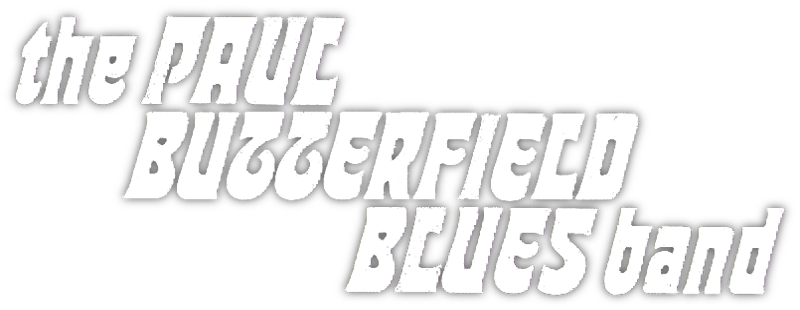Track List
01) Walkin' Blues
02) Get Out of My Life, Woman
03) I Got a Mind to Give Up Living
04) All These Blues
05) Work Song
06) Mary, Mary
07) Two Trains Running
08) Never Say No
09) East West
01) Walkin' Blues
02) Get Out of My Life, Woman
03) I Got a Mind to Give Up Living
04) All These Blues
05) Work Song
06) Mary, Mary
07) Two Trains Running
08) Never Say No
09) East West
3:21
3:16
5:01
2:24
7:57
2:54
3:57
3:01
13:11
Data Complete 80%
Total Rating
Total Rating
Back Cover![]()
CD Art
3D Case
3D Thumb
3D Flat
3D Face
3D Spine
First Released
![]() 1966
1966
![]() Blues
Blues
![]() ---
---
![]() Rock/Pop
Rock/Pop
![]() ---
---
![]() Medium
Medium
![]() Album
Album
![]() 0 copies
0 copies
Album Description
Available in:
The raw immediacy and tight instrumental attack of the Paul Butterfield Blues Band's self-titled debut album were startling and impressive in 1965, but the following year, the group significantly upped the ante with its second LP, East-West. The debut showed that Butterfield and his bandmates could cut tough, authentic blues (not a given for an integrated band during the era in which fans were still debating if a white boy could play the blues) with the energy of rock & roll, but East-West was a far more ambitious set, with the band showing an effective command of jazz, Indian raga, and garagey proto-psychedelia as well as razor-sharp electric blues. Butterfield was the frontman, and his harp work was fierce and potent, but the core of the band was the dueling guitar work of Mike Bloomfield and Elvin Bishop, especially Bloomfield's ferocious, acrobatic solos, while Mark Naftalin's keyboards added welcome washes of melodic color, and the rhythm section of bassist Jerome Arnold and drummer Billy Davenport were capable of both the rock-solid support of veteran blues players and the more flexible and artful pulse of a jazz combo, rising and relaxing with the dynamics of a performance. The Butterfield Blues Band sounded muscular and exciting on classic blues workouts like "Walkin' Blues," "Two Trains Running," and "I Got a Mind to Give Up Living," but the highlights came when the band pushed into new territory, such as the taut New Orleans proto-funk of "Get Out of My Life, Woman," the buzzy and mildly trippy "Mary, Mary," and especially two lengthy instrumental workouts, the free-flowing jazz of Nat Adderley's "Work Song" and the title track, a fiery mix of blues, psychedelia, Indian musical patterns, and several other stops in between, with Butterfield, Bloomfield, and Bishop blowing for all their worth. East-West would prove to be a pivotal album in the new blues-rock movement, and it was the Paul Butterfield Blues Band's greatest achievement; Bloomfield would be gone by the time they cut their next LP to form the Electric Flag, and as good as Bishop was, losing the thrust and parry between the two guitarists was a major blow. But East-West captures a great group in high flight as the bandmembers join together in something even more remarkable than their estimable skills as individuals would suggest, and its importance as a nexus point between rock, blues, jazz, and world music cannot be overestimated.

User Album Review
None...
External Album Reviews
None...
User Comments


Available in:
The raw immediacy and tight instrumental attack of the Paul Butterfield Blues Band's self-titled debut album were startling and impressive in 1965, but the following year, the group significantly upped the ante with its second LP, East-West. The debut showed that Butterfield and his bandmates could cut tough, authentic blues (not a given for an integrated band during the era in which fans were still debating if a white boy could play the blues) with the energy of rock & roll, but East-West was a far more ambitious set, with the band showing an effective command of jazz, Indian raga, and garagey proto-psychedelia as well as razor-sharp electric blues. Butterfield was the frontman, and his harp work was fierce and potent, but the core of the band was the dueling guitar work of Mike Bloomfield and Elvin Bishop, especially Bloomfield's ferocious, acrobatic solos, while Mark Naftalin's keyboards added welcome washes of melodic color, and the rhythm section of bassist Jerome Arnold and drummer Billy Davenport were capable of both the rock-solid support of veteran blues players and the more flexible and artful pulse of a jazz combo, rising and relaxing with the dynamics of a performance. The Butterfield Blues Band sounded muscular and exciting on classic blues workouts like "Walkin' Blues," "Two Trains Running," and "I Got a Mind to Give Up Living," but the highlights came when the band pushed into new territory, such as the taut New Orleans proto-funk of "Get Out of My Life, Woman," the buzzy and mildly trippy "Mary, Mary," and especially two lengthy instrumental workouts, the free-flowing jazz of Nat Adderley's "Work Song" and the title track, a fiery mix of blues, psychedelia, Indian musical patterns, and several other stops in between, with Butterfield, Bloomfield, and Bishop blowing for all their worth. East-West would prove to be a pivotal album in the new blues-rock movement, and it was the Paul Butterfield Blues Band's greatest achievement; Bloomfield would be gone by the time they cut their next LP to form the Electric Flag, and as good as Bishop was, losing the thrust and parry between the two guitarists was a major blow. But East-West captures a great group in high flight as the bandmembers join together in something even more remarkable than their estimable skills as individuals would suggest, and its importance as a nexus point between rock, blues, jazz, and world music cannot be overestimated.
User Album Review
None...
External Album Reviews
None...
User Comments

No comments yet...


